Table of Contents
Silicon Valley remains the epicenter of artificial intelligence innovation.
Many companies have come and gone, but only a few have flourished.
As we navigate through 2025, a new wave of AI startups is reshaping industries from robotics to creative content generation.
This guide presents the 10 Hottest AI Startups in Silicon Valley You Need to Watch in 2025, guiding the AI innovation.
1. Physical Intelligence – Robotics Revolution
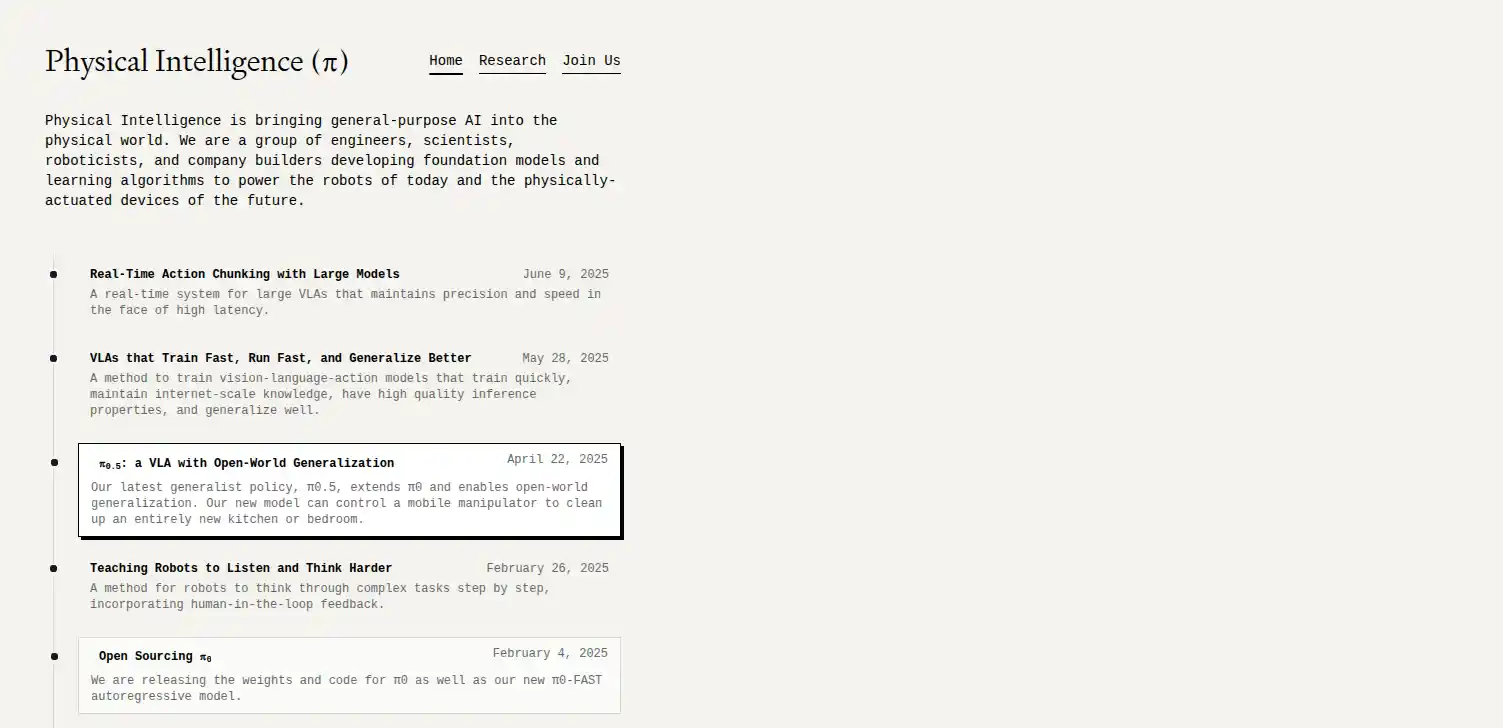
Founded: 2024
Employees: ≈11–50 (estimated; early-stage team)
What They Do
Physical Intelligence is developing foundational software for robots, creating AI systems that can understand and interact with the physical world.
Their technology aims to give robots the ability to perform complex tasks in real-world environments.
Why Consider Them
- Exceptional Leadership: Founded by notable names, including Sergey Levine and Lachy Groom
- Massive Backing: Secured funding from Lux Capital, Sequoia, and Jeff
- Market Timing: Positioned at the intersection of the AI and robotics boom
Best For
Companies are looking to automate physical processes, manufacturing facilities, and logistics operations.
Pros
- Revolutionary approach to robot intelligence
- Strong technical team with proven track records
- Significant venture capital backing
- First-mover advantage in physical AI
Cons
- Very early stage with unproven commercial products
- High technical complexity and development risks
- Long development cycles are typical in robotics
2. World Labs – Spatial Intelligence Pioneer
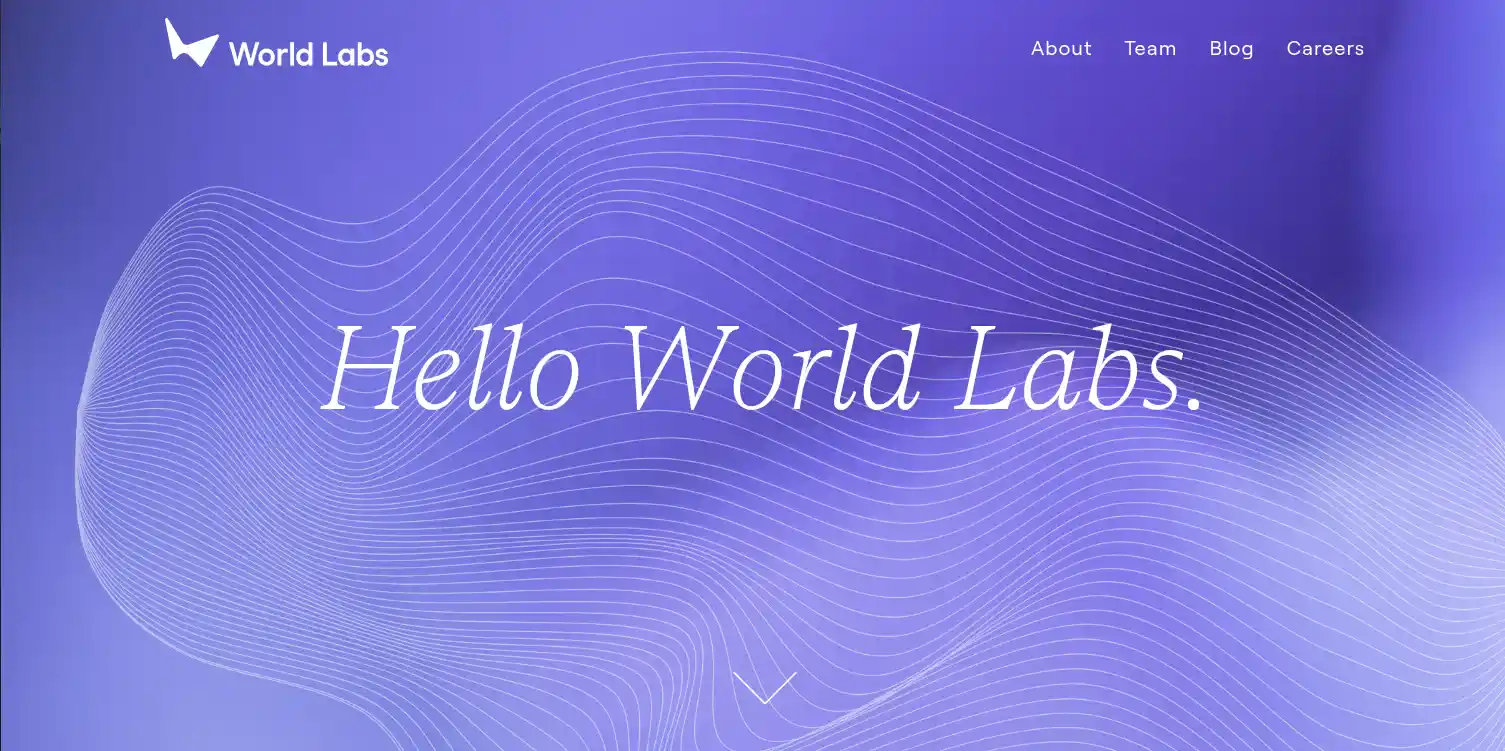
Founded: 2024
Employees: ≈30–50 (estimated; small founding team)
What They Do
World Labs is focused on what comes next: empowering AI to understand and create in 3D.
The company is building Large World Models (LWMs) that bring spatial intelligence into the mix, helping AI reason about objects, movement, and environments.
Why Consider Them
- Pioneering 3D AI understanding
- Addressing a critical gap in current AI capabilities
- Strong technical foundation in computer vision
Best For
Gaming companies, architectural firms, VR/AR developers, and autonomous vehicle manufacturers.
Pros
- Unique positioning in the 3D AI space
- Addresses growing demand for spatial intelligence
- Strong technical innovation potential
- Multiple industry applications
Cons
- Extremely early stage
- Complex technical challenges ahead
- Limited commercial validation
- High competition from tech giants
3. Runway – Creative AI Powerhouse
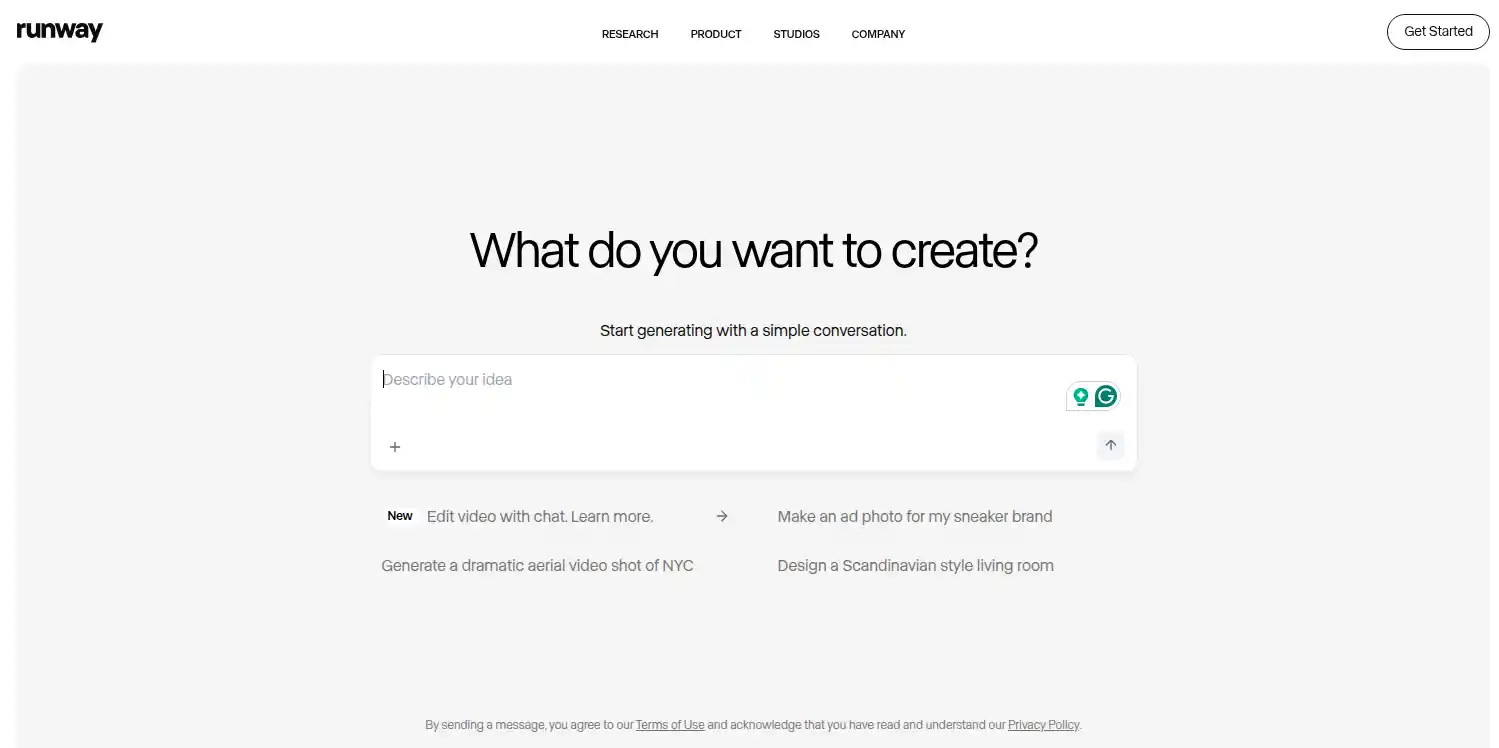
Founded: 2018
Employees: ≈800 (estimated)
What They Do
Runway develops generative AI tools tailored for creative professionals. These include text-to-video, video editing, and motion design features.
Their solutions are widely adopted in advertising, filmmaking, and digital content creation.
Why Consider Them
- Proven product-market fit in creative industries
- Strong revenue growth and user adoption
- Leading position in generative video AI
Best For
Creative agencies, filmmakers, content creators, and marketing teams.
Pros
- Established market presence
- High-quality AI video generation
- Strong user community
- Continuous product innovation
- Backed by top-tier investors
Cons
- Intense competition from Adobe, Meta, and others
- High compute costs for video generation
- Regulatory concerns around deepfakes
- Dependence on creative industry cycles
4. The Bot Company – Conversational Robotics
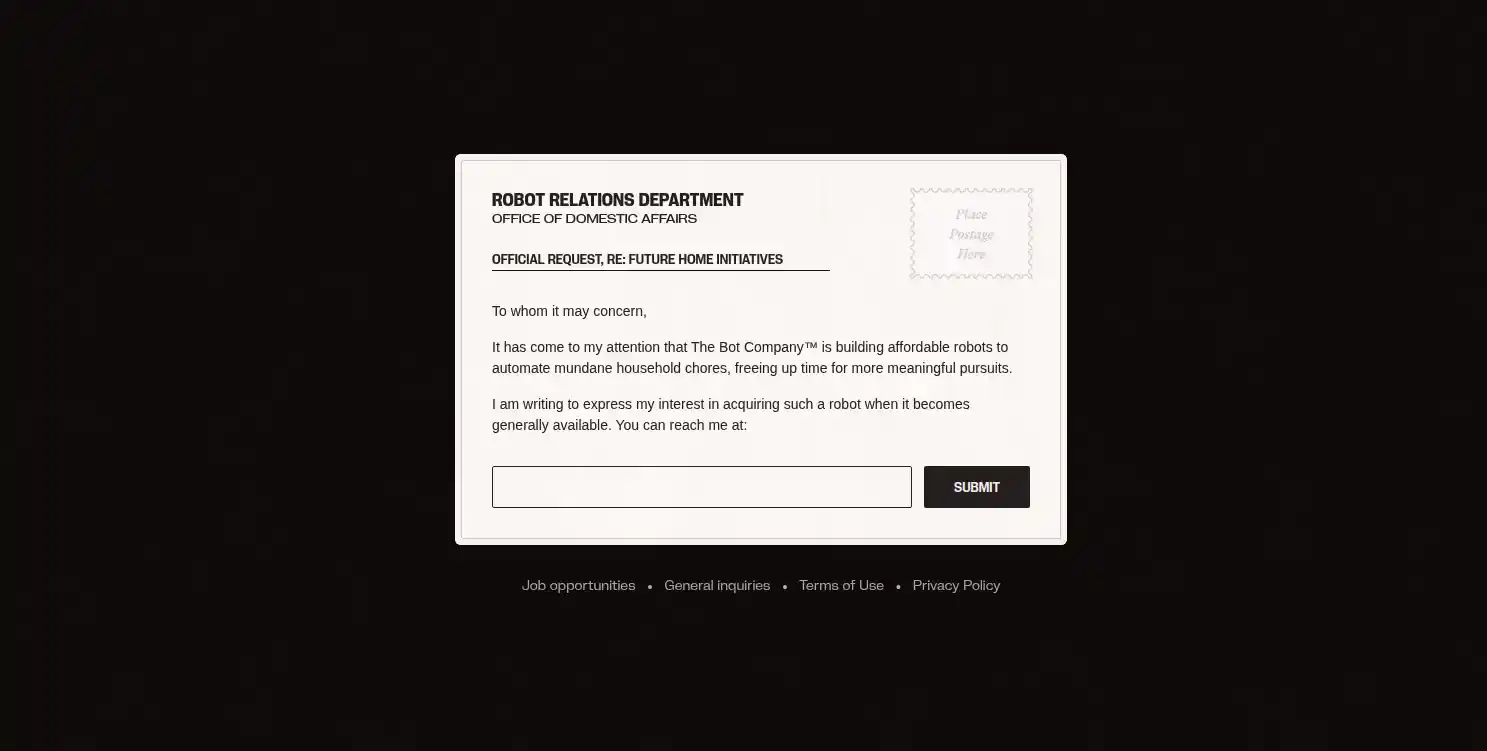
Founded: 2023
Employees: ≈120 (estimated)
What They Do
The Bot Company, founded by former Cruise CEO Kyle Vogt, develops AI-powered household robots designed to handle daily chores and free up individuals’ time.
The company combines advanced robotics with large language models to create intuitive machines capable of understanding natural language commands.
Why Consider Them
- Innovative combination of LLMs and robotics
- User-friendly approach to robot interaction
- Growing demand for conversational AI in robotics
Best For
Hospitality industry, customer service operations, and educational institutions.
Pros
- Cutting-edge LLM-robotics integration
- Intuitive natural language interface
- Adaptable to various environments
- Strong technical differentiation
Cons
- Early-stage product development
- Complex integration challenges
- High development and deployment costs
- Unproven scalability
5. HyScaler – AI Infrastructure Excellence
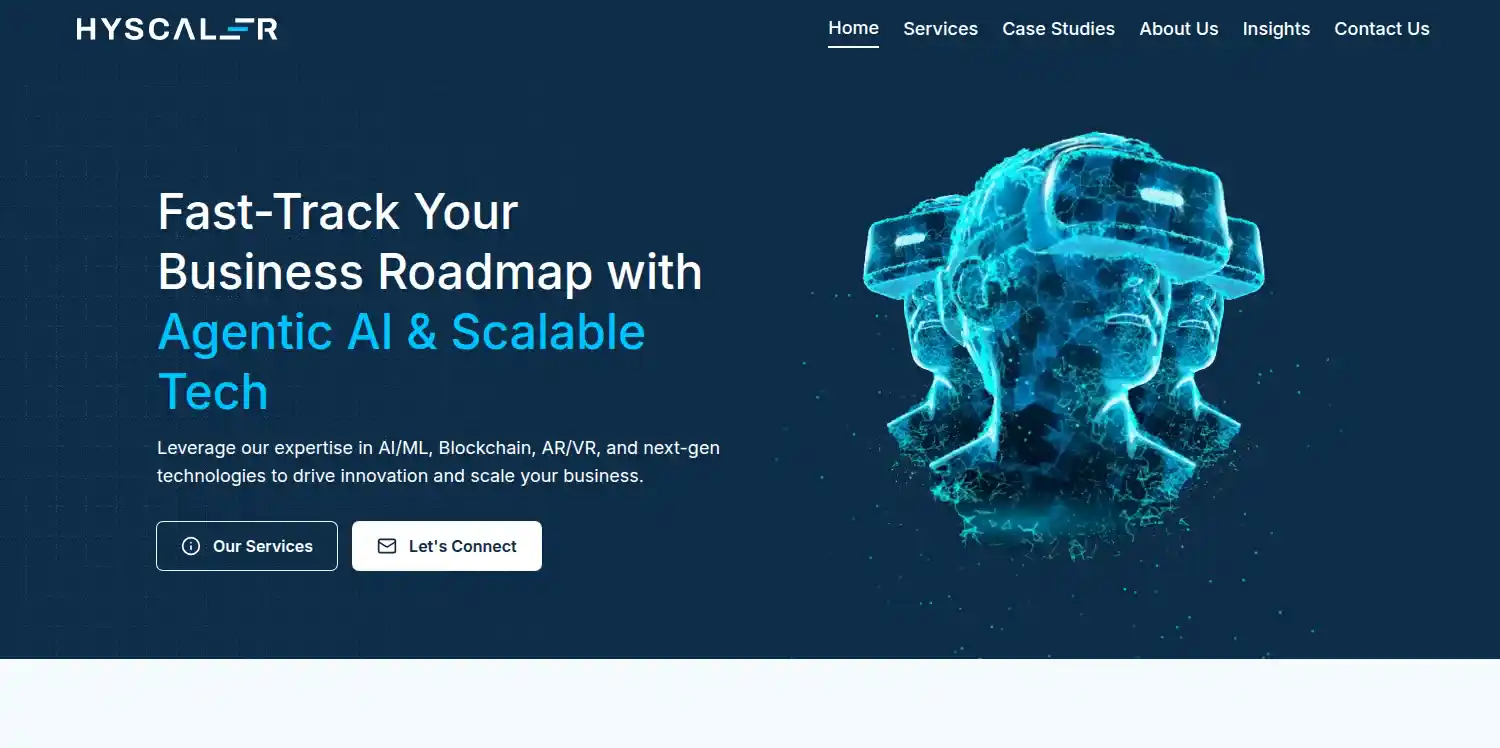
Founded: 2009
Employees: ≈450 (estimated)
What They Do
HyScaler specializes in AI infrastructure and cloud optimization solutions, helping enterprises deploy and scale AI applications efficiently.
Their platform provides automated resource management, cost optimization, and performance monitoring for AI workloads.
Why Consider Them
- Strong focus on enterprise AI infrastructure needs
- Proven track record in cloud optimization
- Growing demand for AI scaling solutions
- Experienced team with deep technical expertise
Best For
Enterprise companies deploying AI at scale, cloud service providers, and AI development teams.
Pros
- Critical infrastructure plays a role in the AI ecosystem
- Strong enterprise customer base
- Recurring revenue model
- High switching costs create customer stickiness
- Growing market demand
Cons
- Intense competition from cloud giants
- Complex sales cycles with enterprises
- Requires continuous R&D investment
- Dependent on overall AI adoption rates
6. Perplexity AI – Search Revolution
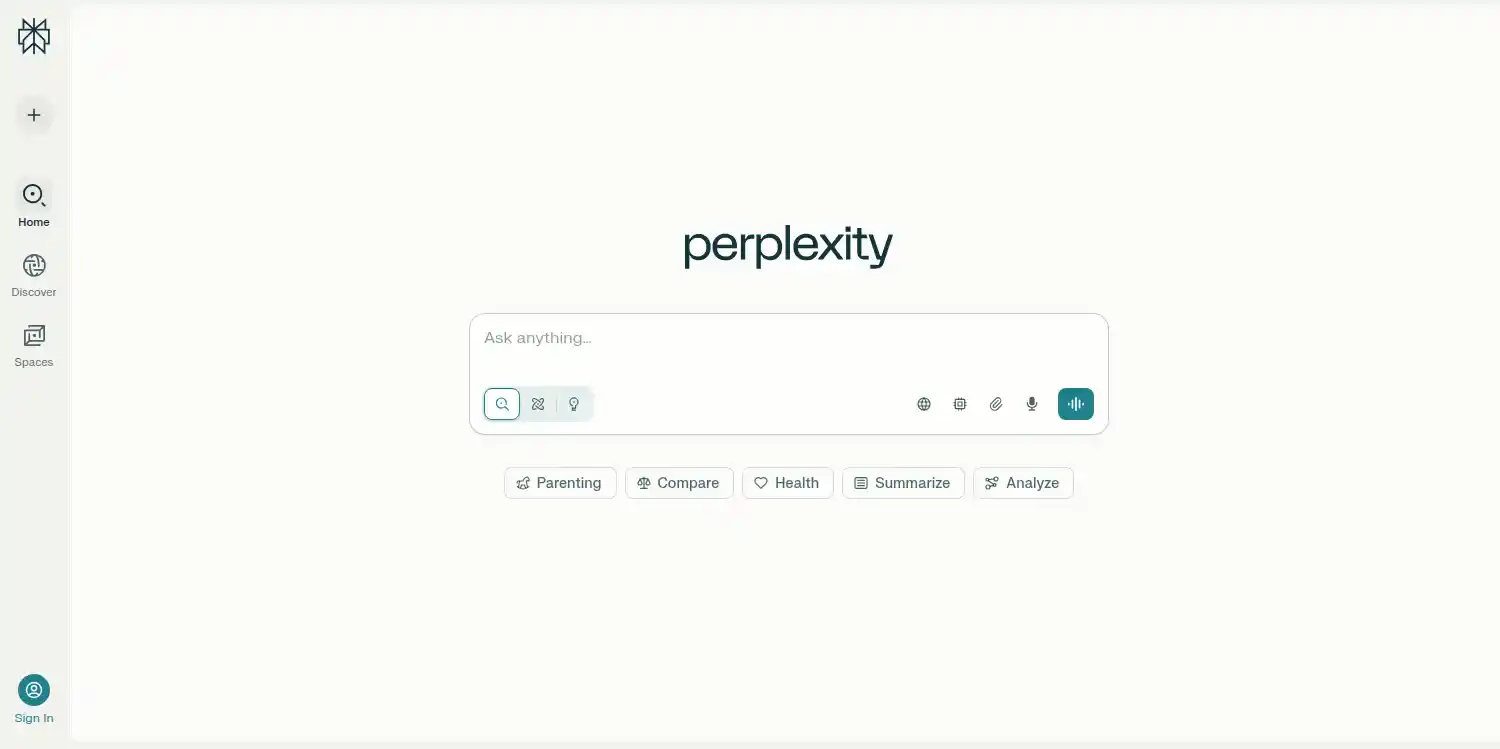
Founded: 2022
Employees: ≈30–40 (estimated)
What They Do
Perplexity AI is revolutionizing search with conversational AI that provides direct answers with source citations.
Their platform combines large language models with real-time web search capabilities.
Why Consider Them
- Direct challenge to Google’s search monopoly
- Growing user base and engagement
- Strong technical capabilities in AI search
Best For
Researchers, students, professionals, and anyone seeking accurate, cited information.
Pros
- Unique positioning against Google Search
- Strong user growth and retention
- High-quality, cited responses
- Multiple revenue streams potential
- Strong technical moat
Cons
- Competing directly with Google
- High compute costs for search queries
- Potential copyright and content issues
- Scaling challenges with growth
7. Character.AI – Conversational AI Platform
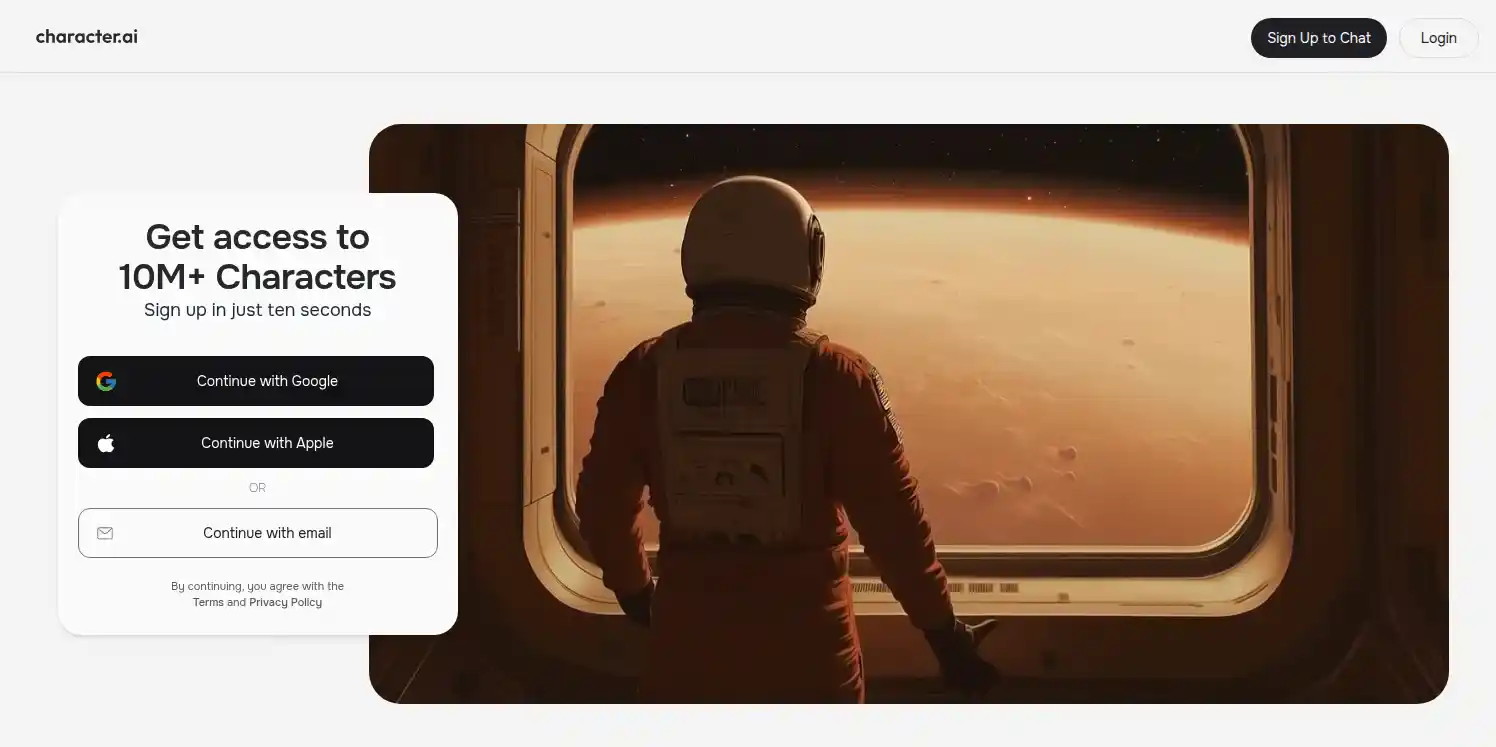
Founded: 2021
Employees: ≈100–220 (estimates vary by source)
What They Do
Character.AI creates personalized AI companions and characters that users can chat with.
The platform allows users to create custom AI personas or interact with pre-built characters for entertainment, education, and companionship.
Why Consider Character.AI
- High user engagement with millions of active users
- Google’s partnership provides significant validation and resources
- Strong technology foundation in conversational AI
- Established revenue model and user base
Note: Character.AI’s founders returned to Google in August 2024 as part of a $2.7 billion deal, making the company’s independent future uncertain.
Best For
Entertainment companies, educational platforms, and consumer applications.
Pros
- Viral user adoption and engagement
- Strong network effects
- Multiple monetization opportunities
- Low customer acquisition costs
- High user retention rates
Cons
- Content moderation challenges
- Safety concerns with AI relationships
- Regulatory scrutiny potential
- Limited enterprise applications
8. Stability AI – Open Source AI Leader
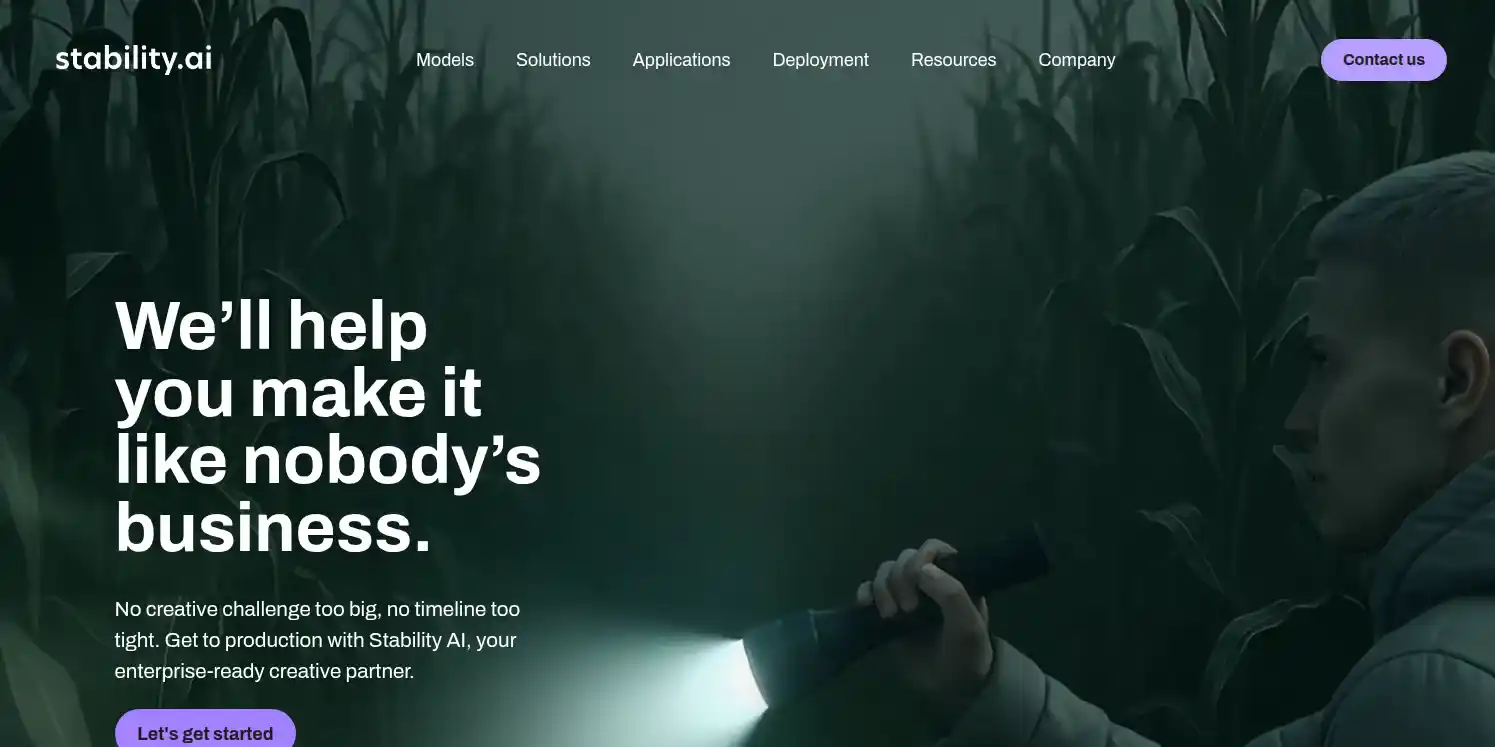
Founded: 2020
Employees: ≈280 (estimated)
What They Do
Stability AI develops and releases open-source AI models, including Stable Diffusion for image generation and other multimodal AI systems.
They’re committed to making AI accessible through open-source development.
Why Consider Them
- Leading open-source AI development
- Strong community adoption
- Multiple AI model capabilities
Best For
Developers, researchers, and companies want customizable AI solutions.
Pros
- Strong open-source community
- Multiple successful AI models
- High developer adoption
- Flexible licensing models
- Innovation leadership
Cons
- Monetization challenges with open-source
- Competition from closed-source models
- Potential misuse of open models
- Talent retention in an open-source environment
9. Midjourney – AI Art Generation
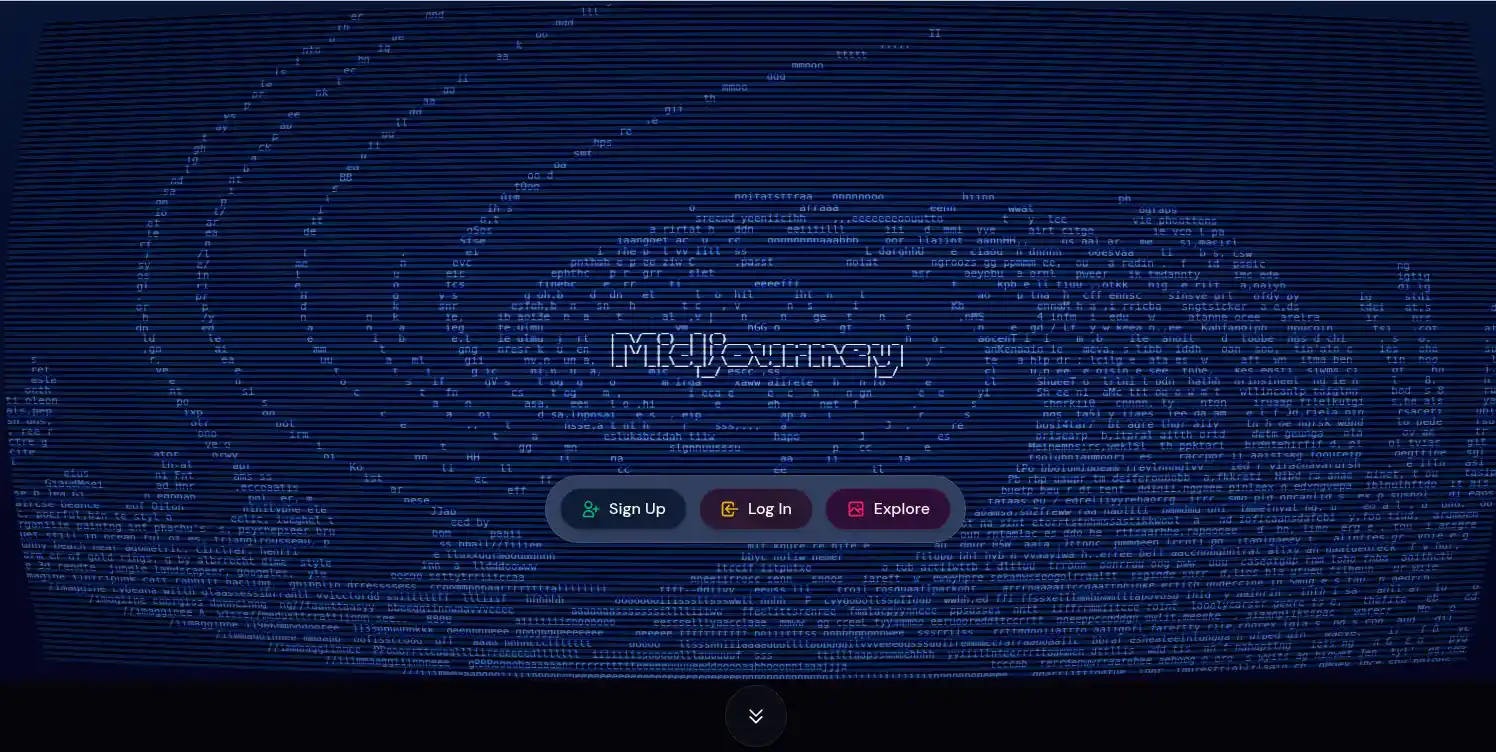
Founded: 2021
Employees: ≈120 (estimated, small team)
What They Do
Midjourney creates stunning AI-generated artwork through text prompts, focusing on high-quality artistic output and user experience.
Their Discord-based platform has gained massive popularity among artists and creators.
Why Consider Them
- Exceptional image quality output
- Strong brand recognition in AI art
- Unique Discord-based community approach
Best For
Artists, designers, content creators, and marketing professionals.
Pros
- Superior image quality
- Strong brand recognition
- Active user community
- Profitable business model
- Continuous quality improvements
Cons
- Limited to image generation only
- Copyright and legal uncertainties
- Platform dependency on Discord
- Competition from larger companies
10. Anthropic – AI Safety Pioneer
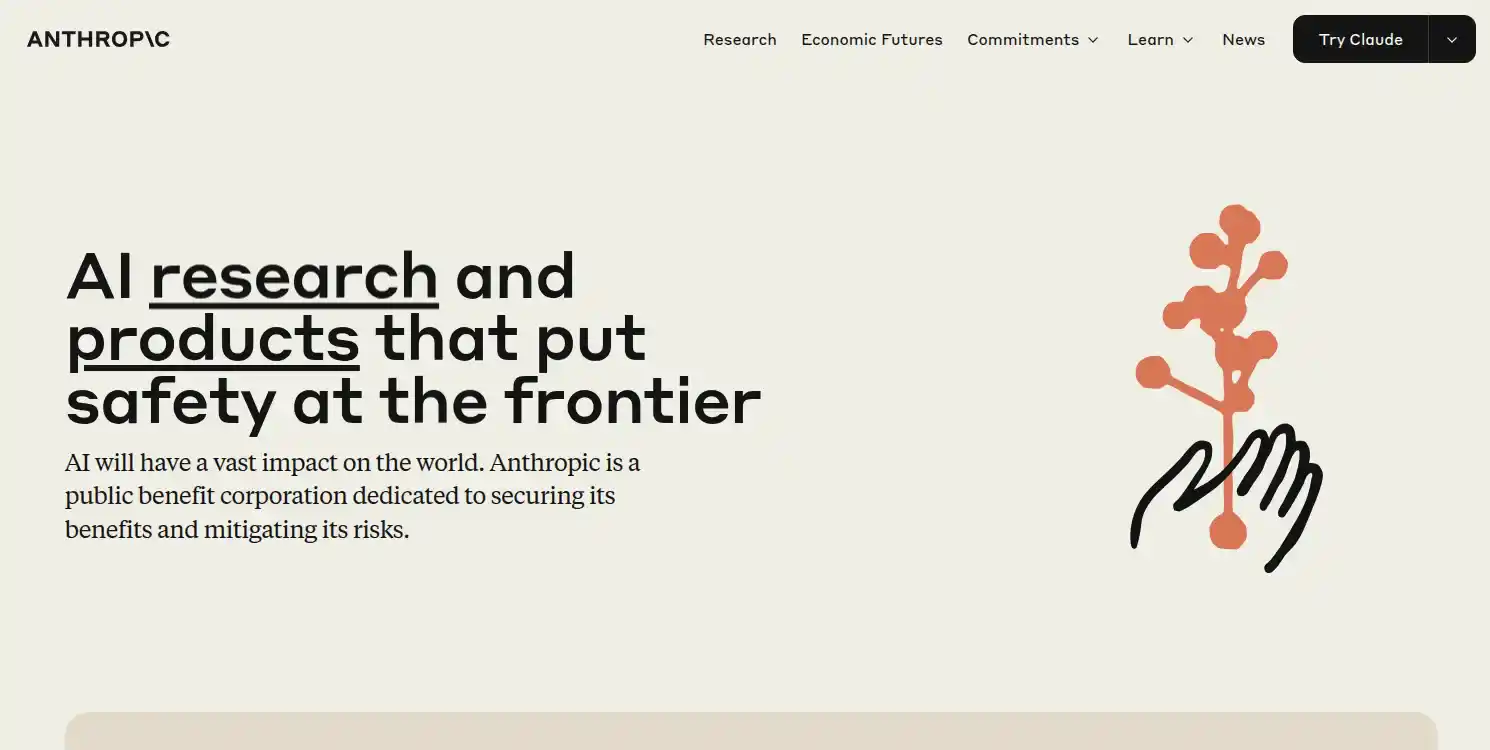
Founded: 2021
Employees: ≈800 (estimated)
What They Do
Anthropic develops safe, beneficial AI systems with a focus on AI alignment and safety.
Their Claude AI assistant represents a new approach to conversational AI with emphasis on helpfulness, harmlessness, and honesty.
Why Consider Them
- Leading AI safety research
- Strong technical capabilities
- Major enterprise partnerships
- Focus on responsible AI development
Best For
Enterprise applications, research institutions, and organizations are prioritizing AI safety.
Pros
- Strong focus on AI safety and alignment
- High-quality AI assistant capabilities
- Major backing from Amazon
- Strong research publications
- Growing enterprise adoption
Cons
- Intense competition from OpenAI and Google
- High R&D costs
- Regulatory uncertainty in AI
- Scaling challenges with safety constraints
11. Thinking Machines Lab
Founded: February 2025
Employee Size: 30-50
What They Do?
They’re building AI systems that are customizable, interpretable, and safer; helping people adapt AI to their specific needs; foundational work on multimodal AI + research with emphasis on transparency and open science.
Why Consider Them?
Because the founder (Mira Murati, formerly CTO at OpenAI) has strong credibility; they’ve raised a large seed round ($2B) at a high valuation (≈ $12B) early on, which shows investor belief; their ambition to combine research, safety, custom use cases and interpretability in one startup is rare.
Best For:
They are considered best for researchers, companies who want AI tools they can adapt/customize, those caring about alignment and safety; perhaps organizations wanting foundational models + transparency.
Pros:
- Strong leadership & pedigree; deep technical talent recruited from top labs.
- Huge funding means resources to really push forward R&D.
Cons:
- Very early stage — many products or commercial applications not yet proven.
- Risk of overpromising; high expectations may be hard to meet.
12. Safe Superintelligence Inc. (SSI)
Founded: June 2024
Employee Size – 10-20 (Very Small)
What They Do?
A research lab / startup focused entirely on developing “safe superintelligence” — i.e. AGI or super-human AI capacities with safety, alignment, and ethical/long-term risk concerns baked in.
They are not initially productizing applications (at least publicly) but building capacity for what might come.
Why Consider Them?
Because it’s founded by AI heavyweights (Ilya Sutskever, Daniel Gross, Daniel Levy), the valuation (tens of billions) is high despite lack of consumer product — shows investor confidence in safety / fundamental AGI research; their approach is distinct (safety first) which may become increasingly important.
Best For:
Those interested in AI alignment, policy makers, research institutions; funders who are focusing on long-term risk; people tracking AGI / safety.
Pros:
- Very focused mission; credibility due to the founding team.
- High valuation means strong backing, choice of resources.
Cons:
- Lack of a clear product / revenue yet. High burn with a long time horizon.
- Risk of technical or ethical missteps; maybe hard to deliver superintelligence safely.
13. Nexthop AI
Founded: 2024
Employee size: 50-200 employees
What They Do?
They build AI infrastructure, especially advanced networking hardware and software optimized for hyperscale AI data centers and cloud operators. Their focus is on high-performance networking with cloud connectivity infrastructure tailored for AI workloads.
Why Consider Them?
Because as AI models grow, the network and hardware bottlenecks including latency, throughput and efficiency become critical; companies that optimize those will be the key. Also, $110M raised Series A shows serious investor interest.
Best For:
- Cloud Providers
- AI Labs those require scalable solutions
- Enterprises building large AI model deployments
Pros:
- Provides infrastructure that many others rely upon; addresses a crucial need.
- Backed by strong investors; likely good potential for growth.
Cons:
- Hardware & infrastructure businesses are often capital-intensive and slow to scale in revenue.
- Competition from big cloud providers who may build in-house solutions.
14. Modular AI
Founded: 2022
Employee Size: ~ 130-280 employees
What They Do?
They build an AI infrastructure/platform that allows developers to deploy and run AI models across different hardware (CPUs, GPUs, different vendors) without rewriting code — tackling hardware lock-in, optimizing inference, latency, cost etc. This enhances overall efficiency.
Why Consider Them?
When it comes to scaling AI the hardware & software fragmentation is a big challenge. Modular’s “write once, deploy anywhere” promise is powerful. Also, they recently raised a large round ($250M) and are gaining traction.
Best For:
Enterprises, startups, developers, or labs that want flexibility in hardware, want to reduce inference costs, avoid vendor lock-in, or need performant deployment on diverse infrastructure.
Pros:
- Strong leadership & technical pedigree (former Apple/Google folks)
- Provides cost and performance advantages; could act as a neutral layer across vendors.
Cons:
- Huge competition (Nvidia, chip vendors, cloud providers) and those incumbents have strong ecosystems.
15. Inflection AI
Founded: 2022
Employee Size: ~ 70 employees
What They Do?
They build generative AI products and hardware/apps; known for “Pi” (a conversational AI) and working on human-computer interaction with more emotional, empathetic dialogue etc.
Why Consider Them?
They’re building a differentiator by bringing human touch by productizing AI. They are also backed by Linkedin’s co-founder Reid Hoffman and come with a mission driven approach.
They bring a mixture of ethics & utility in their design.
Best For:
- Users or organisation interested in conversational AI
- People valuing UX, emotional intelligence in interactions
Pros
- Strong founding team and funding; vision around more than just raw model performance.
- Differentiation via user experience & alignment.
Cons:
- Conversational/emotional AI has tough metrics; subjective quality is hard to quantify.
- Risk of being overshadowed by models/tools that focus purely on scale or performance; may burn cash if growth slows.
16. Braintrust
Founded: 2023
Employee Size: ~ 50-200 employees
What They Do?
They offer an enterprise-grade stack / platform for building AI applications: tools for evaluation, prompt testing, logging/model feedback, managing datasets, integrating multiple models; helping companies build, monitor, and iterate AI productively.
Why Consider Them?
When it comes to having strong evaluation you can rely on them because evaluation & monitoring are often neglected. But, they’re still critical for production deployment.
Their product helps reduce risk, improve quality, and accelerate feedback loops. Also, they have good clients and momentum.
Best For:
- Companies already building or deploying AI systems
- Wanting better tooling around evaluation
- Dev teams that want to improve deployment safety/quality.
Pros:
- Fills a crucial gap in AI dev tooling; can improve reliability/speed of development.
- Early mover in evaluation & dev feedback tooling.
Cons:
- Many similar tools are emerging; risk of being commoditized.
- Must keep up with rapid AI model shifts; sometimes tools lag behind newest model architectures.
17. Glean Technologies
Founded: 2019
Employee Size: 500+ employees
What They Do?
They provide enterprise search & AI powered search assistants for the workplace along with business data.
Their idea is to make search at work more powerful which lets people query their internal documents and systems.
Why Consider Them?
Because enterprise search or knowledge retrieval is a foundational use-case; productivity & knowledge work depend on being able to find the right info quickly.
Glean has valuations in billions, that shows strong investor belief. Also, as more organizations adopt multiple tools, having unified search + agent capability becomes more important.
Best For:
Mid-size to large companies/enterprises; teams with lots of internal data and tools; HR, legal, technical, or support teams; where knowledge retrieval, internal documentation, onboarding etc. matter.
Pros:
- Strong traction; high valuation; solid domain (search + enterprise) with consistent demand.
- Enterprise focus gives stable revenue potential.
Cons:
- Can be hard to build good search over messy, siloed data; integration & privacy/security are tricky.
- Customer acquisition & retention might be challenging in enterprises that move slowly.
18. Qodo
Founded: 2022
Employee Size: ~ 50-200 employees
What They Do?
They provide AI tools for code generation, testing, reviews, code integrity in the software development lifecycle (SDLC). They integrate with IDEs, version control, etc., to help maintain code quality with AI.
Why Consider Them?
Because it helps in development productivity and code quality which are one of the biggest pain points. This helps in efficiency in automating testing, bug prevention which saves real time costs.
Also, their funding and growth are good signals.
Best For:
- Development teams
- Companies building software at scale
- Engineering organisation with lots of odds
Pros:
- Helps reduce bugs, prevent issues upstream; improves developer efficiency.
- Clear ROI for engineering teams.
Cons:
- Competitive space: other tools for code review, coding assistance are increasing fast.
- Need to continually update to work with the newest languages/frameworks and dev workflows.
19. Lawhive
Founded: 2019
Employee Size: ~100
What They Do?
They offer AI-powered legal assistance: automating routine legal tasks like document drafting, onboarding, compliance checks etc. Their product “Lawrence” is a legal assistant.
Why Consider Them?
Legal is a field ripe for automation; routine tasks are rule-based, repetitive. AI tools here can reduce legal costs, speed up processes. Also, legal automation is less sexy but has strong demand.
Best For:
- Small & medium law firms
- Corporate legal departments
- Startups who need legal support
Pros:
- Real use case with tangible cost/time savings; combines domain knowledge with AI.
- Less competition vs some consumer AI spaces.
Cons:
- Might need specialization by jurisdiction; scaling across legal systems is tough.
- Trust is important; clients may be slow to adopt due to risk aversion.
20. Induced AI
Founded: 2023
Employee Size: ~ 10-20 (Very small)
What They Do?
A startup founded by two Indian-origin teens; the product is a no-code and cloud-first automation platform along with a browser environment that allows users to define workflows in everyday language (English) which are converted into pseudocode, with reasoning, memory, etc.
The idea is to automate repetitive tasks/workflows in the background, even across apps.
Why Consider Them?
When it comes to democratizing automation via no code and natural language it becomes very powerful. They come with that advantage.
Small teams with strong backing can move fast; also, high novelty & potential in productivity tools.
Best For:
- Small business
- Non-tech users
- Productivity enthusiasts
Pros
- Low barrier to entry; strong potential user base; helps reduce workload for many.
- Can iterate fast; small team nimble.
Cons:
- Might struggle to scale, monetize; competition from established automation / RPA tools.
- May face UX / reliability / error issues; user expectations might be high vs capabilities.
Key Trends Shaping Silicon Valley’s AI Startup Scene
1. Infrastructure and Tooling Focus
Many successful AI startups are focusing on the infrastructure layer, providing tools and platforms that enable other companies to build AI applications more effectively.
2. Multimodal AI Capabilities
AI has come a long way with language, but companies like World Labs are focused on what comes next, expanding into visual, spatial, and physical understanding.
3. Open Source vs. Closed Source Strategies
The community is split between companies pursuing open-source strategies for community building and those keeping models proprietary for competitive advantage.
4. Enterprise vs. Consumer Applications
While consumer AI applications grab headlines, many of the most valuable companies are focusing on enterprise solutions with clear ROI.
What Makes These Startups “Hot”?
Strong Technical Teams
The most fundable AI startups in 2025 are founded by ex-OpenAI, Google DeepMind, Meta FAIR, or Stanford PhDs, indicating that technical expertise remains crucial for success.
Significant Funding
These companies have raised substantial rounds, indicating strong investor confidence and providing runway for long-term development.
Product-Market Fit
Each startup addresses a specific market need with innovative AI solutions that existing players haven’t adequately addressed.
Scalable Business Models
Whether through API usage, subscription services, or enterprise licensing, these companies have identified scalable revenue opportunities.
Investment and Partnership Opportunities
For investors looking at AI startups in Silicon Valley, key factors to consider include:
- Technical moat: Does the company have defensible technology?
- Market timing: Is the market ready for the solution?
- Team quality: Does the founding team have relevant experience?
- Funding runway: Is there sufficient capital to reach key milestones?
- Competitive landscape: How differentiated is the solution?
The Bigger Picture: AI Boom or Real Growth?
The AI gold rush is on — with billions of dollars pouring into startups every quarter, and valuations often hitting unicorn status before a product even launches. Venture capital firms, tech giants, and even sovereign funds are betting heavily on AI by keeping expectations that IA will reshape every industry — from healthcare and law to logistics and entertainment.
But the question remains: Is this sustainable growth, or just another dot-com bubble in the making?
The answer likely lies somewhere in between. Like the internet boom of the late ’90s, many companies will fade, but the foundational impact of AI will endure. The startups that combine real utility, strong data infrastructure, and clear business models — rather than hype — will define the next decade.
If the dot-com era connected the world, the AI era is teaching the world to think. The winners of this revolution won’t just be those who build the smartest models, but those who integrate intelligence meaningfully into everyday life — transforming industries quietly but permanently.
The Future of AI in Silicon Valley
Silicon Valley’s AI startup ecosystem continues to evolve rapidly.
Artificial Intelligence (AI) remains at the center of the stage in the latest Y Combinator Demo Day, showing sustained interest and investment in AI innovations.
The companies highlighted in this list represent just the beginning of what’s possible with artificial intelligence.
As these AI startups continue to mature and new ones emerge, we can expect to see even more innovative applications of AI technology across industries.
Whether you’re an investor, potential employee, or business leader looking for AI solutions, keeping an eye on these hot startups will give you insights into where the AI industry is heading.
The next few years will be crucial for determining which of these companies will become the next generation of AI giants.
FAQs
What is the next big thing in Silicon Valley?
AI is the most talked-about thing in the tech industry and is the next big thing in the Silicon Valley.
What is happening in Silicon Valley about AI?
Silicon Valley has moved from consumer websites and apps to AI. Its in its hard tech era where AI is the next big thing.